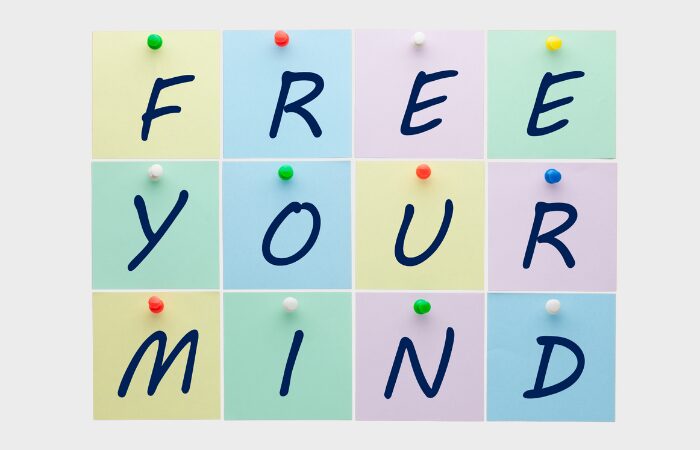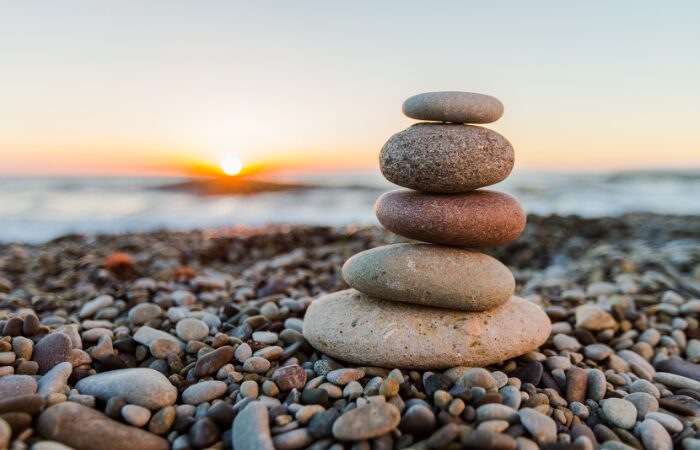
Mindfulness is a concept that has gained popularity over the years, but what does it really mean? At its core, mindfulness is about being fully present in the moment. It involves focusing your attention on the here and now rather than getting lost in thoughts about the past or future. This awareness can help you appreciate life more deeply and reduce stress and anxiety. For those of you exploring mindfulness for beginners, this journey might be a simple yet transformative experience.
Being mindful means tuning in your thoughts, feelings, and bodily sensations without judgment. It encourages you to observe your experiences as they happen. You might wonder why this practice is important. The answer lies in its remarkable benefits. When you engage with the present moment, you can develop a greater sense of calm and clarity. You start to notice things that you might usually overlook—like the sound of birds chirping or the taste of your morning coffee. Observing the world around you can bring joy and reduce the noise of daily life.
The Science Behind Mindfulness
You may be curious about what science says regarding mindfulness. Research shows that practicing mindfulness can significantly benefit mental and physical health. For people new to this practice, studies have found that mindfulness practices, such as meditation and deep breathing, can lower stress levels, improve focus, and even enhance emotional resilience. As a beginner, you don’t need to dive into complicated methods; starting with simple exercises can lead you to experience these benefits.
Mindfulness creates changes in the brain that can lead to better emotional regulation. Several studies indicate that regular mindfulness practice can literally reshape your brain. For example, the cortisol and adrenaline which triggers stress reactions, tends to be less active. Meanwhile, the prefrontal cortex, responsible for decision-making and self-control, becomes more engaged. This means that when you practice mindfulness, you are working to enhance your brain’s ability to deal with challenges calmly. As a beginner in mindfulness, understanding these scientific aspects can motivate you to give it a try.
How to Start Your Mindfulness Journey
Getting started with mindfulness is easier than you may think. You don’t need fancy equipment or a special location; all you need is a willingness to be present. If you’re looking for mindfulness for beginners, consider starting with just a few minutes a day. Find a quiet place, sit comfortably, and close your eyes. Focus on your breath; feel the air entering and leaving your lungs. When your mind wanders, gently bring your attention back to your breath. Over time, this practice can enhance your ability to stay present throughout the day.
Another effective technique for beginners is mindful observation. Choose an everyday activity like eating, walking, or even washing dishes. As you engage in this activity, pay attention to every detail. Notice the textures, smells, and sensations. You might find that you often rush through daily tasks without truly experiencing them. However, when you practice mindfulness during these moments, you can cultivate a richer, fuller experience. This approach allows you to incorporate mindfulness into your life seamlessly.
It’s also helpful to incorporate mindfulness apps or guided meditations into your routine. Many apps offer mindfulness for beginners, providing structured sessions that can help you stay focused and motivated. Whether it’s a five-minute breathing exercise or a longer guided session, these resources can make mindfulness more approachable. They can also introduce you to different techniques that suit your preferences, making the process enjoyable.
Overcoming Challenges in Mindfulness Practice
As you begin your mindfulness practice, you may face challenges. It’s important to acknowledge that mindfulness is a skill that takes time to develop. You might find it difficult to quiet your mind, or you may feel restless or distracted. These experiences are entirely normal, especially for beginners. The key is to remain patient and gentle with yourself. Remember that there is no right or wrong way to practice mindfulness.
If your thoughts wander during meditation, note that this is a common occurrence. Instead of feeling frustrated, simply notice where your mind has gone and bring your attention back to your breath or chosen point of focus. This act of returning your focus is a practice in itself. It demonstrates your ability to acknowledge distractions without judgment, which is a vital aspect of mindfulness. Over time, you will become better at managing these distractions.
Another challenge might be finding the time to practice mindfulness. In our busy lives, making time for yourself can feel daunting. However, integrating mindfulness into your daily routine can be very beneficial. Consider setting reminders or dedicating specific times in your day for mindfulness. Whether in the morning or during a break at work, carving out this time for yourself can significantly improve your mental well-being.
“This blog post may contain affiliate links. This means that if you click on a link and make a purchase, I may earn a small commission at no extra cost to you. These commissions help support the maintenance of this blog and allow me to continue sharing valuable content. I only promote products and services that I genuinely believe in and recommend. Thank you for your support!”

Simple Techniques to Get Started with Mindfulness
If you’re curious about mindfulness for beginners, getting started is easier than you might think. You don’t need any fancy equipment or a special location. All it takes is a willingness to be present in your life. By incorporating mindfulness into your daily routine, you can cultivate a greater sense of awareness and joy. Let’s dive into some simple techniques that can help you begin your mindfulness journey today!
Start with Your Breath
One of the easiest ways to start practicing mindfulness is by focusing on your breath. Find a quiet place where you feel comfortable, free from distractions. Sit or lie down in a position that feels good to you. Close your eyes and take a deep breath in through your nose, feeling your lungs fill with air. Then, exhale slowly through your mouth, letting all the stress and tension flow out.
As you breathe, bring your attention to the sensation of the air entering and leaving your body. Notice how your chest and abdomen rise and fall with each breath. If your mind begins to wander—and it likely will—gently guide your attention back to your breathing. Remember, this is completely normal! Each time you return your focus to your breath, you’re practicing mindfulness. As a beginner, you might start with just four or five minutes daily and gradually increase the time as you become more comfortable.
Engage in Mindful Observation
Another wonderful technique for mindfulness for beginners is called mindful observation. This technique involves paying close attention to your surroundings, whether you’re eating, walking, or even doing household chores. By fully immersing yourself in these simple activities, you can cultivate a rich and fulfilling experience.
Imagine you’re enjoying your morning coffee. Instead of gulping it down in a rush, take the time to truly appreciate it. Observe the color of the liquid, the steam rising from the cup, and the aroma wafting up to your nose. Take a sip and let the warmth fill your mouth while focusing on the flavors. Notice the sensation of the cup in your hands and the texture of the coffee as it travels down.
This kind of attention transforms routine tasks into enjoyable experiences. By practicing mindful observation, you’ll begin to notice the beauty in the small moments of life, making your days feel more fulfilling and vibrant.
Utilize Mindfulness Apps or Guided Meditations
For beginners, technology can be a great ally in your mindfulness journey. Mindfulness apps and guided meditations are widely available, making it easier than ever to incorporate mindfulness into your daily routine. Many of these apps offer short sessions that are perfect for beginners, helping you stay focused and motivated.
Look for apps that provide a variety of mindfulness practices tailored to your preference. You can choose between breathing exercises, body scans, or even walking meditations. Start small! A five or ten-minute session can work wonders in getting you accustomed to the practice.
Listening to guided meditations can also take the pressure off when you’re just starting. An experienced guide can help you navigate through distractions and stay anchored in the present moment. Best of all, you can enjoy these practices anywhere—whether in your backyard, in a quiet corner of your home, or even during your lunch break.
Overcome Initial Hesitations
As you begin, you may feel hesitant or unsure about starting your mindfulness practice. That’s completely normal! It’s crucial to approach your practice without judgment or pressure. Remember, mindfulness is all about being kind to yourself.
If you find it challenging to concentrate during your practice, don’t be discouraged. Everyone faces this at the beginning. Instead of feeling frustrated when your mind wanders, simply acknowledge those thoughts and gently guide your focus back to your breath or the activity at hand. This act of returning your attention is part of the mindfulness practice itself.
Set realistic expectations for yourself. The goal isn’t to eliminate all distractions from your mind, but rather to develop the skill of being aware and present. As you continue practicing, you’ll notice progress over time. With each session, you’ll likely find it easier to stay focused and aware, which promotes a sense of peace.
Integrate Mindfulness Into Your Daily Routine
To make mindfulness a consistent part of your life, it’s helpful to integrate it into your daily routine. Consider setting aside a specific time each day to practice. This could be first thing in the morning, during your lunch break, or before bedtime. By building mindfulness into your schedule, it becomes a cherished part of your day rather than an item on your to-do list.
You could also enhance your mindfulness practice by creating reminders throughout your day. For example, take a moment to pause and breathe deeply before each meal, or set an alarm on your phone to prompt a few minutes of mindfulness. These small practices will accumulate and help reinforce your commitment to living mindfully.
As you explore these techniques for mindfulness for beginners, remember that the key is to approach the journey with an open and friendly mindset. Embrace the process, and let yourself enjoy every step along the way. Keep this guide handy and refer back to it whenever you need inspiration or a reminder of the powerful benefits of mindfulness. Through consistent practice, you’ll soon find yourself more present, calm, and connected to the world around you.
Keep reading! How To Master Mindfulness: Unlock Inner Peace And Clarity In Your Life. Your mindfulness journey awaits!

Creating a Mindfulness Routine
Establishing a mindfulness routine can seem daunting, especially if you’re new to the practice. However, incorporating mindfulness into your daily life enhances your well-being and creates lasting positive changes. By making mindfulness a part of your routine, you can deepen your awareness and nurture a sense of calm. Here are some valuable tips to help you stay consistent as you develop a mindfulness practice, especially if you’re exploring mindfulness for beginners.
Start Small and Build Gradually
When beginning your mindfulness journey, the key is to start small. You don’t need to dedicate long hours to the practice right away. Instead, consider setting aside just five to ten minutes each day. This amount of time feels manageable, especially for beginners. Use this time to focus on your breath or engage in a simple mindfulness exercise. For example, try sitting in a comfortable position and paying attention to your inhales and exhales.
As you grow more comfortable paying attention to your breath, you can gradually increase the duration. You might add an additional minute each week until you reach a point where you’re practicing for 15 to 20 minutes daily. Small changes can lead to substantial results over time. The important thing is to find a rhythm that works for you. Consistency is crucial in developing your practice, and starting small makes it easier to establish mindfulness as part of your daily routine.
Designate a Specific Time and Place
Creating a mindfulness routine becomes more attainable when you designate a specific time and place for your practice. Choose a time that suits your lifestyle and allows you to reflect without interruptions. Some people find early mornings to be the perfect time, while others prefer practicing in the evening after a busy day. Whatever time you decide, commit to it and make it non-negotiable. By treating this time as an essential part of your day, you’ll begin to view it as a priority.
Additionally, finding a quiet, comfortable space to practice mindfulness can enhance your experience. This could be a corner of your home, a garden, or even a nearby park. The key is to choose a place where you feel at ease and can focus without distractions. By consistently returning to the same spot, your brain will start to associate that space with mindfulness. As a result, you will find it easier to slip into a mindful state each time you practice.
Utilize Mindfulness Resources
There are countless resources available to aid your mindfulness practice. Many apps specifically designed for mindfulness for beginners offer guided meditations, breathing exercises, and invitations to engage in mindful moments throughout the day. Some popular apps include Headspace, Calm, and Insight Timer. These apps provide structured sessions that can help you stay focused and motivated. You can choose from various meditation lengths based on your schedule and preferences.
Besides apps, consider exploring online resources such as articles, videos, and podcasts. High-quality materials from reputable websites like Mindful.org can provide you with valuable insights and practices to support your mindfulness journey. They also offer extensive guides for integrating mindfulness into your lifestyle. Being open to learning from various sources will deepen your understanding of mindfulness and enrich your overall practice.
Track Your Progress
Tracking your mindfulness journey can help you stay consistent and visualize your progress. You can maintain a mindfulness journal where you record your thoughts, experiences, and any challenges you face. Each day or week, note how you feel before and after your practice, and identify any moments in your daily life when you were able to engage in mindfulness. This reflection helps you see the benefits over time and reinforces the importance of your practice.
Alternatively, some mindfulness apps include a tracking feature that allows you to log your sessions quickly. Seeing your commitment to practicing can motivate you to remain consistent. Even if your practice varies from day to day, recording your efforts keeps you engaged and mindful of your growth over time.
Overcoming Obstacles to Consistency
Developing a consistent mindfulness routine may come with its challenges. Life can be unpredictable, and finding time for yourself may feel overwhelming at times. However, it’s essential to remind yourself that practicing mindfulness doesn’t have to be rigid or lengthy. If you miss a day or two, don’t be hard on yourself. Remember that mindfulness is about observation and acceptance. Take a moment to notice any frustration and gently shift your focus back to being present.
It can be beneficial to remind yourself of your intentions behind your mindfulness practice. Reflect on the reasons you started this journey in the first place. Do you want to reduce stress, improve your focus, or find more joy in daily life? By reconnecting with your purpose, you can rekindle your motivation and engage more fully in your practice.

Embrace Your Mindfulness Journey
Creating a mindfulness routine is a deeply personal experience that takes time and patience. As you explore mindfulness for beginners, focus on building small habits, designating time and space, and utilizing available resources to support your practice. Embrace the journey and celebrate your progress, no matter how small.
Establishing a mindfulness routine offers many rewards, including enhanced emotional resilience, reduced stress, and a greater appreciation for life’s moments. By incorporating these tips into your daily life, you can cultivate a mindfulness practice that not only lasts but also enriches your well-being. Remember, the path to mindfulness is unique for everyone, so honor your progress and enjoy the journey.
Overcoming Common Challenges in Mindfulness Practice
Starting your mindfulness journey can be an exciting adventure! However, you might face some common challenges along the way. Don’t worry; this is completely normal. Mindfulness for beginners often comes with its own set of hurdles, but with a little patience and practice, you can overcome them and enjoy the many benefits mindfulness has to offer.
Embracing Distractions
One of the first obstacles you may encounter is a busy mind. You might find it tough to quiet your thoughts during meditation. It’s like trying to catch butterflies in a storm! You may feel restless, anxious, or simply find your mind wandering off to your grocery list or tomorrow’s meeting. This can be frustrating, especially when you’re trying to focus. The key is to embrace this distraction instead of fighting against it.
When you catch your thoughts drifting, acknowledge them without judgment. You can gently say to yourself, “Ah, there goes my mind again.” Then, gently redirect your focus back to your breath or whatever point of concentration you’ve chosen. This process is incredibly valuable. Each time you bring your attention back, you strengthen your mindfulness practice.
Remember, mindfulness for beginners is about progress, not perfection. Celebrate your achievements, even if they seem small. You might just find that with practice, your ability to remain focused improves, transforming your experience into one of deeper awareness and peace.
Making Time for Mindfulness
Another common challenge you might face is finding time in your busy schedule to practice mindfulness. Life can feel overwhelming, right? Between work, family obligations, and social commitments, carving out a moment for yourself may seem impossible. But guess what? You can easily integrate mindfulness into your daily routine without a heavy time commitment.
Start by setting aside just a few minutes each day. Maybe you can do this first thing in the morning or right before bed. Even a short, mindful coffee break at work or a minute of deep breathing while waiting in line can make a big difference.
If you’re still struggling to find time, consider using reminders. Set notifications on your phone or place sticky notes in visible spots to nudge you toward mindfulness. When you see that note, take a moment to breathe deeply and tune in to the present. You’ll be surprised at how these little moments add up. Making time for mindfulness doesn’t have to be complicated; it just requires a little creativity!
Dealing with Frustration
As you begin practicing mindfulness, it’s crucial to be patient and gentle with yourself. Mindfulness for beginners often comes with feelings of frustration. You might expect instant results or find yourself comparing your progress to others. Remember that everyone’s mindfulness journey is unique. What works for someone else may not work for you, and that’s perfectly okay!
When you notice frustration creeping in, pause and take a deep breath. Remind yourself that mindfulness is a practice, and like any new skill, it takes time to develop. Instead of expecting a perfectly quiet mind or complete concentration, focus on the willingness to try and experience each moment as it comes.
If you find yourself feeling overwhelmed, take a step back. It’s completely normal to visit a space of discomfort as you learn. Try to shift your mindset from “I must get this right” to “I’m learning and growing.” Celebrate the sheer act of showing up and making time for yourself amidst life’s chaos.
Embracing mindfulness can be one of the most rewarding experiences you’ll have. While you may encounter challenges along the way, remember that these struggles are part of your personal growth journey. Be patient with yourself as you navigate the ups and downs of mindfulness practice.
Finding the time, focusing the mind, and dealing with frustration might feel tricky at first, but with each attempt, you’re laying the foundation for a more present and fulfilling life. Your dedication to mindfulness for beginners will pay off, enhancing your overall well-being and bringing a sense of peace to your day-to-day experience.
So, keep practicing, be gentle with yourself, and enjoy the process. You’re on your way to discovering a brighter, more mindful version of you!

